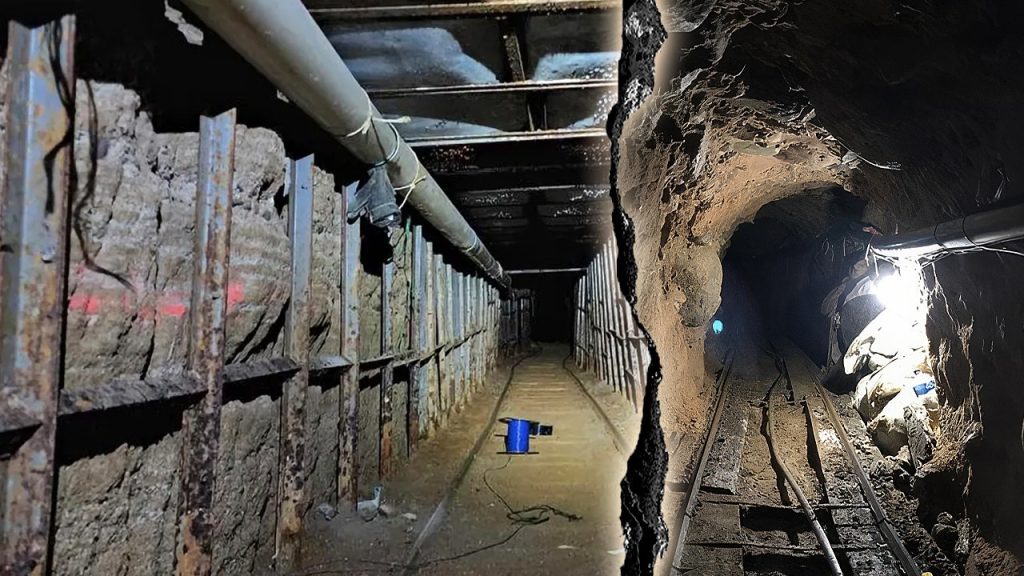The Challenge of Underground Drug Smuggling
Mexican drug cartels have devised intricate methods to smuggle drugs into the United States, one of which involves an extensive network of cross-border tunnels. These tunnels, often equipped with sophisticated rail and cart systems, pose a significant challenge for law enforcement and the Trump administration, which has made curbing the flow of illegal narcotics a top priority. According to the U.S. Drug Enforcement Agency (DEA), while most illicit drugs enter the country through vehicles at southern border entry points, a substantial amount still finds its way through these subterranean passageways. In 2022, the National Institute on Drug Abuse reported that an estimated 107,941 people in the U.S. died from drug-involved overdoses, underscoring the urgent need to address this issue.
The Complexity of Tunnels
Michael Brown, a former DEA Senior Special Agent and current global director of counter-narcotics technology at Rigaku Analytical Devices, explains that these tunnels are far from simple holes in the ground. They are elaborate "underground cities" with complex air duct systems, office spaces, and even weapon stashes. The tunnels can be up to several miles long and are designed to efficiently move hundreds of kilos of drugs. Brown points out that the cartels have more financial resources than groups like Hamas, which also used tunnels in Gaza. The cartels’ vast wealth, derived from the lucrative drug trade, allows them to construct and maintain these sophisticated underground networks.
Identifying and Disrupting Tunnels
The DEA and Homeland Security Investigations (HSI) have been working tirelessly to identify and disrupt these tunnels. One of the key challenges is uncovering the "cover-ups" that cartels use to hide tunnel entrances and exits. These cover-ups often appear as ordinary storefronts or warehouses, such as "Joe’s Pizza Shop" or "Jose’s Mechanic Shop," making them difficult to detect in border towns like Eagle Pass and Brownsville, Texas. Brown suggests that federal authorities need to intensify their investigations and possibly offer financial incentives to individuals who provide crucial information about tunnel locations. This approach could help uncover the U.S. connections and entry points that are essential for stopping the flow of drugs.
Impact of Trump’s Policies
Since Trump’s return to the White House, there has been a notable decrease in border crossings. In the first seven days after his inauguration (Jan. 20-26), there were 7,287 migrant encounters at the southern border, with a daily average of 1,041 encounters. This is a stark contrast to the 20,086 encounters in the final seven days of the Biden administration (Jan. 13-19), averaging 2,869 encounters per day. While this reduction is significant, Brown emphasizes that the tunnels remain a significant problem that requires continuous and robust efforts to combat.
Comparisons with International Efforts
Brown draws a comparison between the U.S. and Israel’s approaches to dealing with underground threats. Following the October 7, 2023, Hamas attack on Israel, the Israel Defense Forces (IDF) launched a campaign to dismantle the terrorist group’s network of tunnels. In one instance, the IDF flooded the tunnels with water to render them unusable. However, Brown states that the U.S. would never adopt such extreme measures, particularly if it involved damaging civilian infrastructure. He notes that while the U.S. faces a serious threat from drug smuggling, it is not on the same scale as the daily existential threat Israel experiences, which might justify more drastic actions.
Moving Forward with Vigilance
The fight against drug trafficking through cross-border tunnels is ongoing, and federal agencies are continuously adapting their strategies. Brown’s insights highlight the need for a multifaceted approach, combining technological surveillance, community intelligence, and international collaboration. The DEA, Immigration and Customs Enforcement (ICE), and HSI are key players in this effort, and their coordinated actions are crucial for identifying and shutting down these hidden entry points. While the reduction in border crossings is a positive sign, the complexity and resilience of the cartels’ tunnel networks mean that vigilance and innovative solutions are essential to continue making progress in this critical area.












